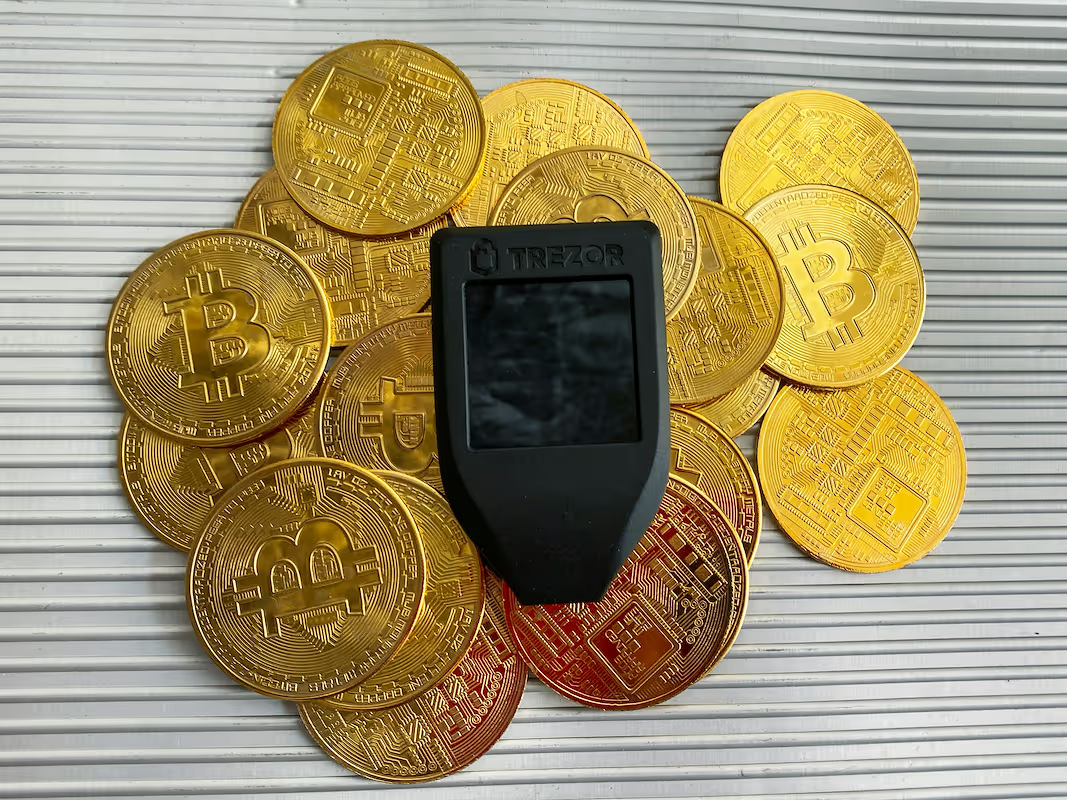Key Takeaways
- Decentralized Ledger: A blockchain is a shared digital record book distributed across many computers.
- Immutable Records: Transactions are permanently recorded and cannot be changed, ensuring data integrity.
- Cryptographic Security: Each block is cryptographically linked to the previous one, creating a secure chain.
What is Blockchain?
A blockchain is a distributed digital ledger, a chain of blocks containing transaction data. Think of it as a public record book for Bitcoin (BTC). Every 10 minutes, a new block is added, recording all recent transactions—from a few sats (0.00000001 BTC) to multi-million dollar transfers. This system creates a transparent and verifiable history of every single transaction.
This chain is not stored in one place but is copied across thousands of computers worldwide. This decentralization means no single person or entity controls it. Each block is cryptographically linked to the one before it, making the record of transactions permanent and tamper-proof. Once a transaction is confirmed, it's there for good, securing the entire network's integrity.
How Blockchain Works
When a transaction occurs, it's broadcast to a peer-to-peer network of computers. These computers, known as nodes, validate the transaction. Validated transactions are then bundled together into a new block by miners. This new block is cryptographically sealed and added to the existing chain, creating a permanent and public record that is nearly impossible to alter.
Blockchain in Banking and Finance
This is how blockchain rebuilds the foundation of banking and finance.
- Construct a private, permissioned network to give financial institutions full control over access and data.
- Tokenize real-world assets—from equities to real estate—creating liquid, programmable instruments for trade.
- Use smart contracts to automate compliance and complex financial agreements, reducing operational friction.
- Execute cross-border payments and securities settlements almost instantly, bypassing slow legacy systems.
Benefits of Blockchain Technology
Blockchain technology offers more than just a new way to handle digital currency; it provides a robust framework for trust and efficiency. Its core features translate into significant advantages across various industries, fundamentally changing how we interact with data and value.
- Transparency: All participants share the same documentation, creating a single source of truth.
- Security: Cryptographically linked blocks and decentralization make data highly resistant to fraud.
- Efficiency: Automating processes with smart contracts and removing intermediaries speeds up transactions.
- Traceability: Easily track the origin and journey of assets, improving supply chain management.
- Availability: The distributed nature of the network means it's always online, with no single point of failure.
Challenges and Limitations of Blockchain
Despite its potential, blockchain technology faces significant hurdles to widespread adoption. These obstacles range from technical performance issues to regulatory uncertainties, which must be addressed for the technology to mature.
- Scalability: Processing a high volume of transactions quickly remains a major technical challenge for many networks.
- Energy: The proof-of-work consensus mechanism used by major blockchains consumes substantial amounts of electricity.
- Regulation: The legal framework for digital assets is still developing and varies significantly across jurisdictions.
- Complexity: Integrating blockchain with existing systems presents considerable technical and operational difficulties.
Future Trends in Blockchain
Blockchain's trajectory points toward greater integration and new forms of digital interaction. As the technology matures, it will connect disparate systems and build novel economies. This evolution promises significant advancements but also introduces new complexities.
- Interoperability: Different blockchains will communicate, allowing for fluid asset transfers across networks, though standardization remains a challenge.
- Integration: Combining with AI and IoT will build autonomous systems for supply chains, but also introduces new security vulnerabilities.
- Sustainability: Greener consensus mechanisms are gaining ground, though they may present new centralization risks.
The Lightning Network: Scaling Bitcoin's Blockchain
The Lightning Network is a Layer 2 protocol operating on top of Bitcoin's main blockchain. It addresses scalability by creating off-chain payment channels between users. Within these channels, parties can conduct numerous transactions instantly and with minimal fees. These smaller, frequent transactions are not individually recorded on the main blockchain. Instead, only the final settlement of the channel is broadcast and confirmed on-chain, significantly reducing network congestion and improving Bitcoin's capacity for micropayments.
Join The Money Grid
You can access this global payments network, built on Bitcoin's open foundation, through platforms like Lightspark, which provides the infrastructure to move money instantly across borders. Their tools offer instant Bitcoin transfers, integrate with the Lightning Network for low-cost payments, and connect traditional currency systems to the blockchain, giving you a direct path to the future of finance.


